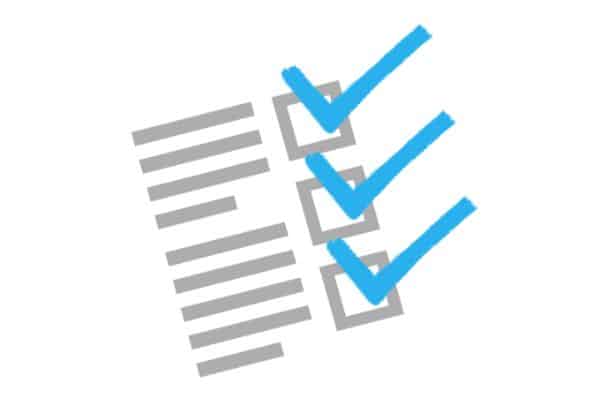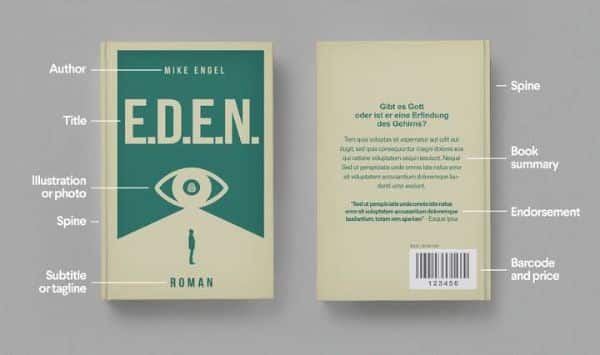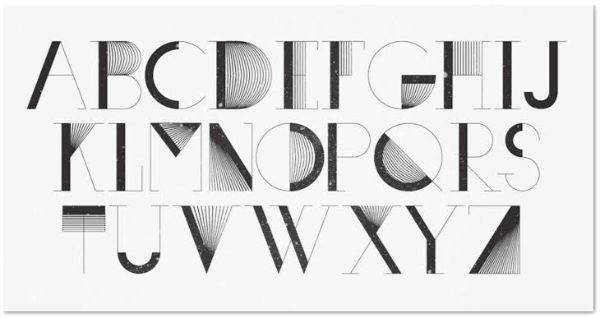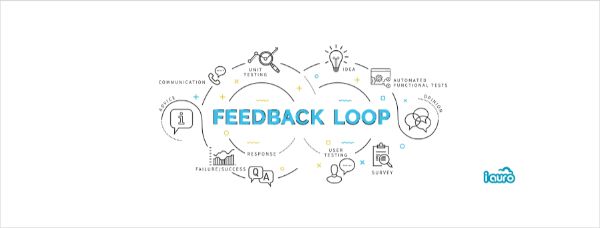Line25 is reader supported. At no cost to you a commission from sponsors may be earned when a purchase is made via links on the site. Learn more
While it’s true that people say you shouldn’t judge a book by its cover, people generally tend to, and they should. The cover of your book helps build the first impression of your book or is the first interaction that your potential customers have to know about the book they’re holding. Consider it as an equivalent of a home page in website design. It is the vestibule that would decide if a reader wants to open your book and read it or put it back to the shelf. A general reader shops by their eye, they often want something that has a sense of familiarity, but they also want to be surprised as well, by something refreshing and new. There are many books published each year, so it’s evident that a good book cover design is likely to catch the eyes of the readers and help its chance of getting picked up and rise exponentially. The cover design should be able to convince the readers that the content of the book is worth the reader’s time and attention.
This is why we will be discussing The Ultimate Guide to Book Cover Design for your convenience and a little insight into essential considerations you should check while designing your next book cover.
1. Understanding the Pre-requisites:

Find out who the author is and what is their brand: Since the author wrote the book, keeping their ideologies and perspective as core to designing the cover becomes essential. Understand if they’re young and debuting with their first book or if they’re fine and experienced in the industry with excellent experience and have a pre-determined notion of what their cover should feel like.
Include references from established genres: There are a few commercial fiction genres that fall strictly in a particular genre. These various genres include thrillers, romance, fantasy, science-fiction and horror. Each of these genres has been a part of the writing industry since ages, and each of them has an established cover design style from decades ago. Whenever you design the cover of a book, your goal is to sell it across as much as possible. Hence you should always take inspiration at least to some extent adhere to the standard-bearers of the particular genre the book falls in. A picture of a foreign planet shows science-fiction, a cover that has couples indicates a romantic story. The idea is to use the expected but give it an interesting twist that makes it new and surprising.
Identify where the book is going to be sold: This makes much difference since there isn’t only one way of producing books these days. While you may assume that your author wants to publish a fine print book, chances are he’s looking for eBook with the rise of eBook readers. Designing a cover for both of these elements can be different and require different guidelines. Since as an eBook it would be sold on popular shopping portals, your book cover design would be displayed as a thumbnail of a fixed proportion that you’ll have to adjust your design into. For this, you need to keep your text bigger and more eye-catching for grabbing the customer’s endless scrolling eyes. A print book, on the other hand, would have a shelf life, where the reader can pick it up, feel the cover, flip through some pages and have a more tactical experience.
Understand the format of paper used: If the author wants to publish a fine-print book, there are a lot of paper qualities available for the same. There are paperback, case bound or hardback options. Each paper quality has their requirement of how to be used and designed on, which the designer needs to be aware of. The size of the book can vary and be of any size the designer can dream of. However, it is wise first to understand what size would work best for the book instead of randomly deciding on size. By logic, the smaller the trim size would be the lesser would be the words per page. The size of the design also depends on the content size of the book; if it’s a 300-page book, it might look very thick and hefty if designed very small. On the contrary, if it’s a larger book, it needs to maintain to the right length to avoid feeling like a magazine or booklet.
The monotonous but essentials: While designing a book cover, there are some essential features you need to include in the design of your cover like logos of the publishing company, and the author. Also, the barcodes so the book can be sold in stores.
Understanding the budget: First and foremost, the budget should be discussed in thorough details to understand the author’s expectation and so that they can be made aware of the possibility of all extra costs that might show up during the designing process. Such expenses include ISBN identifier, font licensing and barcode.
2. Getting familiar with elements of a Cover:

A book cover has three essential parts; the front cover, the back cover and the spine that connects both of these. For paperback books, the pages are glued together and then glued together with a paper cover which is then cut to match the size. Whereas for hardbacks, the pages are either glued or sewn into a case-made of cardboard. It is later covered with a paper or a cloth. There are more premium options available such as linen-wrapped hardbacks, varnishing, foil stamping and embossing at many printing places. These options can make your design look rich but also increase the per-book cost significantly.
3. Understand and Research the Market:
Deciding by genre: While you have the freedom to experiment and design a book cover as per your choice, it is often best to understand specific guidelines to ensure that your efforts are put in the right direction and don’t exhaust you of your money and hard work. Understand the genre of the book you’re trying to sell. If you’re working on a cover for literary fiction, thrillers or autobiographies hard copies are a popular choice for such books, and if you’re selling any commercial genres stick to paperback.
Deciding by need: If you’re designing a book that has an expected target audience who likes to read while travelling, your book needs to be paperback whereas if it is meant to be aimed at selling to libraries, they prefer hardcovers as they’re more rigid and easy to maintain over a period of time.
4. Take a design direction:

Sit and work on the design direction you want to take for the cover of the book you’re designing. While doing this, always have an underlying thought of how it fits and complement the author’s vision of their book. There are many beautiful books out there, but not all designs work for all books, for which you should invest time on community pages like Pinterest and search for a similar title and see few samples of what the existing market trend looks like, scroll through some and see what catches your eye. Then spend time identifying what element was different in that cover compared to the rest that made it stand out. Now try inculcating something similar in your design. If Pinterest isn’t enough inspiration, go down to your local book store and pick up some books to get a tactical feeling of the different material of papers, the thickness and other such essential aspects. Always keep making notes of what you liked and didn’t, doing this helps design your book cover in the later stages.
5. Find the hero of your design:

When you think of the cover of a book, you should consider it equivalent to an extended marketing plan for the book. Figure out what is the essential aspect of the story, the thing that makes the story unique. This USP needs to be highlighted for readers to want to know in elaborate details about the USP teased on the cover of the book. It can be many things, varying from a particular character in the book that is very interesting and different from any existing characters in any books. Maybe it is the style of writing chosen by the fresh author and a bit different that hasn’t been explored before. The book can be written about a famous historical place or monument, shedding light on the matter like it hasn’t been before providing the audience with a new development on an ongoing debate as well. You might also think of a blockbuster that you see has many inferences to your book and use that subtly to leverage your sales in a manner that doesn’t make it too visible or makes your book feel like a cheap copy. Another aspect that can come in handy is the probability of the author wanting to convert the current title into a series. If that’s the case, think of one design element that you can incorporate in the upcoming books as well whenever they come out, and maintain that design element throughout. This helps create uniformity and aesthetic value of the series that creates a brand identity for the author.
6. Choose Fonts and Graphics:

One of the features for book cover designs that act as both a benefit and a challenge is the fact that there is almost no graphic style that can’t work. The authors have a wild imagination, and as a designer, it is your job to translate and represent those thoughts into your cover design. The problem with this is that narrowing down such a broad imagination or style can be challenging. You can use various elements to design your book cover, be it like an illustration, a photograph or an abstract design. The range can include a cartoon doodle to a heavy emphasis on modern typography. It helps to select the format when you consider the image each style sends out to the book-buyer. For instance a picture of Eiffel Tower as a book cover for a story that isn’t set anywhere near Paris may not help the audience connect to the storyline however an illustration of the Eiffel Tower in a thought bubble of a kid who aspires to see it, which is a part of the plot of the story makes more sense and be more accurate to the story. Generally, soft typography and natural settings work best for women’s fiction books, and vintage photographs generally indicate a historical movement or event. You can also select your typefaces as per the era you’re representing as it would help readers associate better and set them in the right headspace for the setting of the story.
Since you’re a designer, you should be aware that while using stock images for cover may seem like a convenient option, and according to you it might do justice to the storyline too, there can always be a risk of some other book cover using the same picture in the near future or already in the past. Originality and authenticity are two essential aspects of a book, and hence using stock photos should be avoided as much as possible.
7. Gain a second, third and even fourth person’s perspective:

You might have visualized a design for the cover of the book that does it justice according to you. You must be very sure that it fits entirely and the cover covers all aspects of the story the book portrays. However, no matter how professional you are as a designer, you’ll always have a bias towards your line of thought, and you might let it influence or cloud the minor faults you made while designing the cover that won’t be visible to your eyes. This is why it is best to continually collect feedback, ask fellow designers if the cover does justice to the book without giving them context. Sit with the author and ask them if it does justice to their vision as well. You could even sit with your family member and ask for their feedback. Doing so gives you an insight of all potential stakeholders who are going to interact with the book, and you might get some fresh perspective that helps you look back on your original design and find a scope of improvement. You should always seek feedback even if it comes in favour of your design and you need not make any changes later on, as it keeps you unbiased.
These were the 7 tips and rules for the Ultimate Guide to Book Cover Design you should keep in mind while designing your next book cover.
